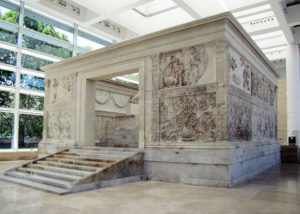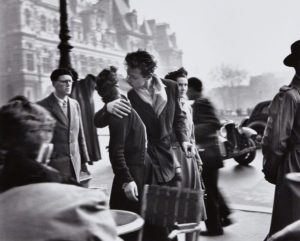More About Rome…
On Tuesday, I said that what I like best about Rome is its people, the Romans. And that’s true. But even without them, Rome would still be my favorite city in the world because of its churches.


Not the churches you’ll find in tour guides. These are random churches – nondescript on the outside – that you can step into on any given street in Rome. And inside, you are enveloped in sumptuous, astonishing beauty. Sculpture. Art. Tile. Metalwork. Mosaics.
Before I experienced the churches of Rome, I had a common condescension towards Baroque art. I considered it overdone. But in its presence, I don’t have that feeling. Yes, there is a lot of it. One thing on top of another. But that doesn’t make me want to denigrate it. It makes me want to engulf myself in it, time and again.
On days like these, when we have nothing particular to do, K and I stop at almost every church we pass… and each one is a marvel.
More About Tour Guides… and Tourists

Whenever I feel comfortable doing so, I ask our tour guides about the differences they experience serving tourists from different countries. I’ve asked this question dozens of times. And the answers are almost always the same.
Americans are at the top of the list because they are usually upbeat, unpretentious, enthusiastic to learn, and generous in their tipping. Japanese are up there, too, and for the same reasons. But the Japanese are, for some, overly polite. They tend to be restrained in expressing their feelings, so it is difficult for the guides to know if they are happy with their guided experience.
Canadians have all the same attributes as their USA cousins, but they aren’t as generous with the tipping. Europeans, including Eastern Europeans, are somewhat difficult to please and don’t tip at all. And of them, the French are the worst. “They are never happy with anything,” Nicholas, our guide in Athens, told me.
“So are they the absolute worst?” I asked, suspecting he had saved that for last.
“No,” he said, shaking his head ruefully. “It’s the Chinese.”
Chinese tourists, according to my personal survey, have the reputation of being almost impossible to deal with. “They are loud, rude, and pushy,” said a guide I befriended some years ago. “And they don’t listen to you. They don’t care about the history or culture of the country they are seeing. They just want to take pictures and rush to the next tourist site.”
I know. These are crude generalizations. They are not true for every French or Chinese tourist. And there are plenty of Americans that behave terribly. But we make generalizations for a good reason. Actually, for two good reasons. Because they are, in general, true. And because they are, generally, amusing.
If you’d like to take a look at some slightly more scientific surveys about “best” and “worst” tourists, here are three articles that might entertain you. Click here… and here… and here.
 MarkFord
MarkFord



